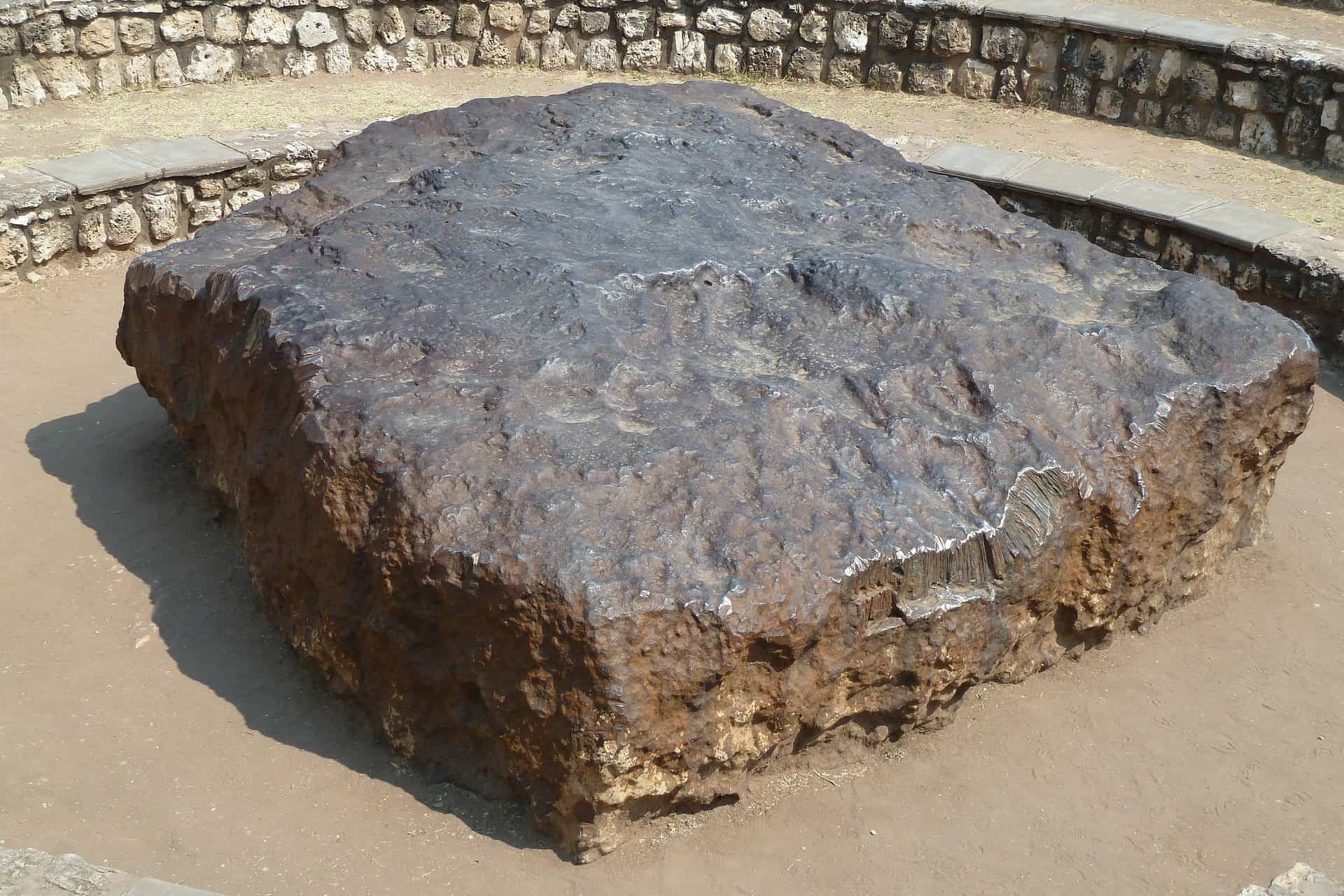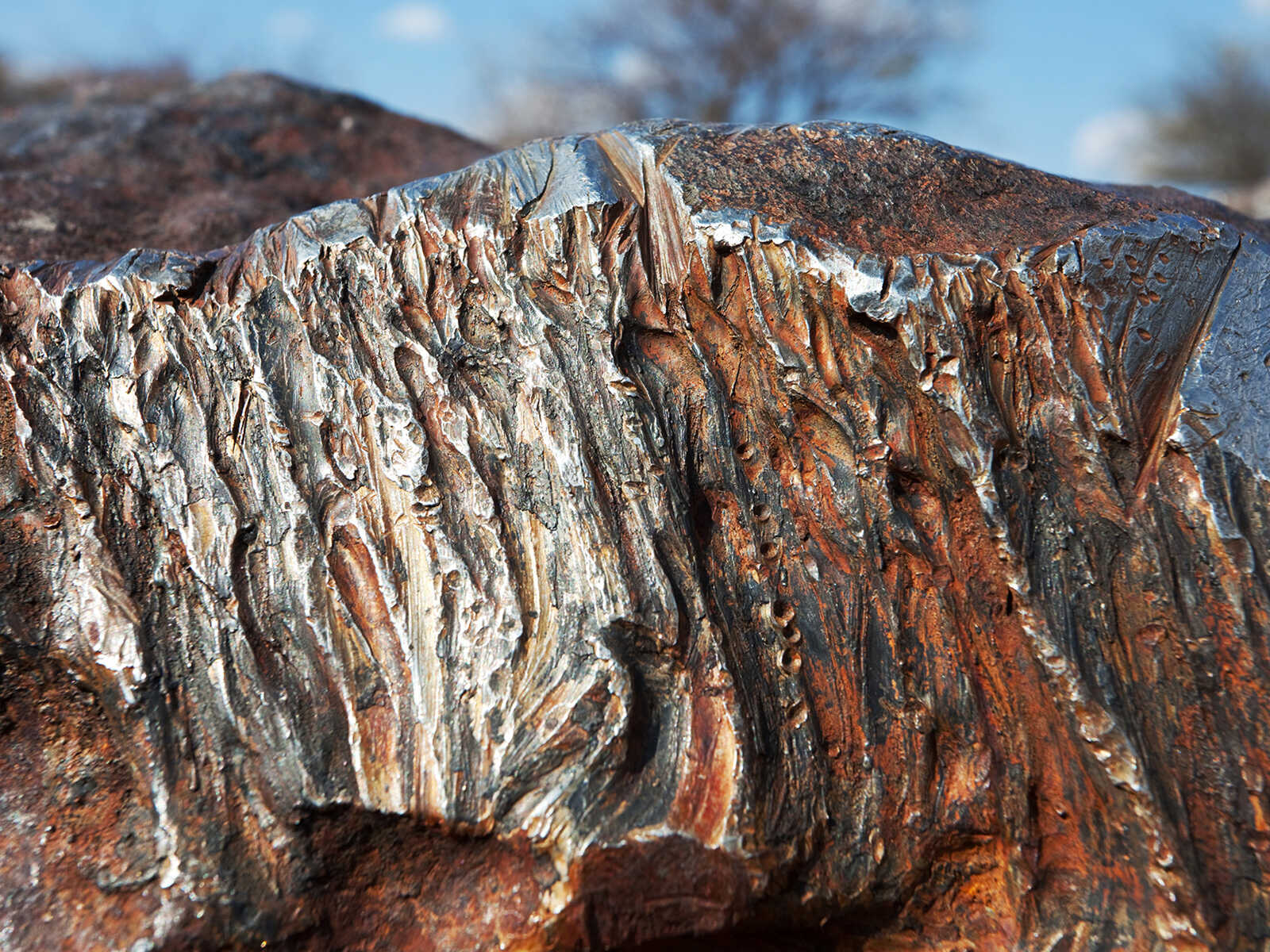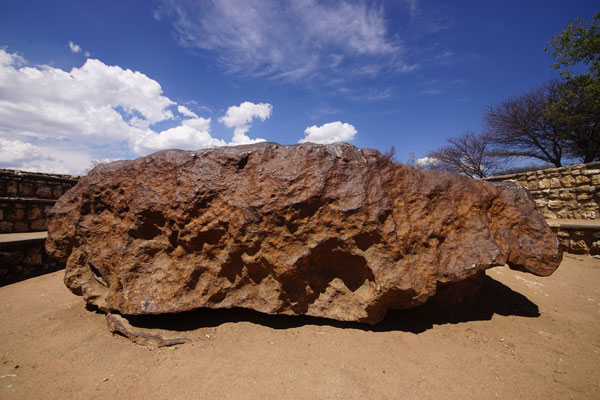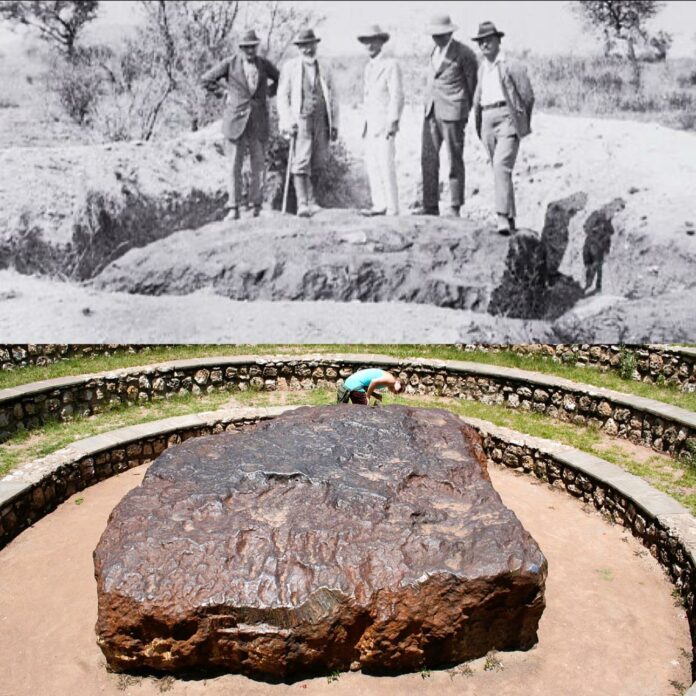The Earth is a treasure trove of geological wonders, but among them stands a true celestial gem – the Hoba Meteorite. Nestled in the arid landscape of Namibia, this colossal iron-rich visitor from the depths of space has captivated the minds of scientists and visitors alike for over a century. As the largest known meteorite on our planet, both in mass and volume, the Hoba Meteorite offers a rare glimpse into the early history of our solar system and the mysteries of the cosmos.
Formation and Arrival

The Hoba Meteorite is classified as an ataxite, a unique type of iron meteorite with an exceptionally high nickel content, estimated to be around 16%. This composition suggests that the Hoba Meteorite is a remnant of the early solar system, formed billions of years ago from the same materials that gave rise to our Sun and the planets.
The meteorite’s journey to Earth is believed to have begun as part of a larger celestial body, which eventually broke apart due to the immense forces at play in the cosmos. Over time, the Hoba Meteorite separated from the rest of the fragmented debris and embarked on a long, perilous voyage through the vast reaches of space.
Estimates suggest that the Hoba Meteorite fell to Earth less than 80,000 years ago, a relatively recent event in geological timescales. Its arrival was marked by a dramatic descent through the atmosphere, as the meteorite’s flat shape and perhaps a low angle of entry allowed it to skip across the top of the atmosphere like a flat stone skipping across water. This unique entry mechanism is thought to have significantly reduced the meteorite’s speed before it finally settled on the ground, leaving no visible impact crater.
Physical Characteristics

The Hoba Meteorite’s sheer size and impressive dimensions are what truly set it apart from other meteorites. Measuring approximately 2.7 meters (8.9 feet) by 2.7 meters, with a thickness of around 0.9 meters (3 feet), this celestial behemoth is estimated to weigh a staggering 60 tons, making it the heaviest known meteorite on Earth.
The meteorite’s surface is marked by intriguing features, such as regmaglypts – thumb-like indentations caused by the intense heat and friction experienced during its passage through the atmosphere. These unique markings add to the meteorite’s allure and provide valuable insights into the conditions it endured on its journey to Earth.
One of the Hoba Meteorite’s most remarkable characteristics is the absence of an impact crater. This is attributed to its flat shape and potentially low-angle trajectory, which allowed the meteorite to slow down significantly before hitting the ground, thereby avoiding the creation of a large crater. This rare feature adds to the scientific fascination surrounding the Hoba Meteorite and the processes that led to its gentle landing.
Composition and Preservation

The Hoba Meteorite’s high iron (approximately 84%) and nickel (around 16%) content are hallmarks of its ataxite classification. This unique composition, along with traces of cobalt and other elements, provides valuable insights into the early formation of our solar system and the materials that were present during that era.
Due to its exceptional size and the logistical challenges involved in moving it, the Hoba Meteorite has remained at its original discovery site since its serendipitous discovery in 1920 by a Namibian farmer. Over the years, various conservation efforts have been undertaken to protect the meteorite from vandalism and natural weathering, ensuring its preservation for future generations of scientists and visitors.
Scientific Significance and Public Fascination

The Hoba Meteorite’s sheer size, unique physical characteristics, and connection to the early solar system make it a treasure trove of scientific information. Researchers have long studied the meteorite, analyzing its composition, structure, and the processes that led to its formation and arrival on Earth. These insights have contributed to our understanding of the origins and evolution of our solar system, as well as the materials and conditions that existed in the early stages of its formation.
Beyond its scientific significance, the Hoba Meteorite has also captured the imagination of the public. As a rare and tangible link to the mysteries of space, the meteorite has become a popular tourist attraction, drawing visitors from around the world to marvel at its impressive size and learn about its celestial origins. The meteorite’s enduring presence on Earth serves as a constant reminder of the profound connections between our planet and the vast, ever-evolving cosmos.
Conclusion
The Hoba Meteorite stands as a captivating testament to the wonders of the natural world and the enduring mysteries of the universe. This colossal iron-rich visitor from the depths of space, with its exceptional size, unique composition, and remarkable lack of an impact crater, offers a rare and invaluable window into the early history of our solar system. As a source of scientific fascination and public wonder, the Hoba Meteorite continues to inspire exploration, expand our knowledge, and connect us to the grand tapestry of the cosmos. Its presence in Namibia serves as a constant reminder of the profound and enduring links between our Earth and the celestial realms beyond.
